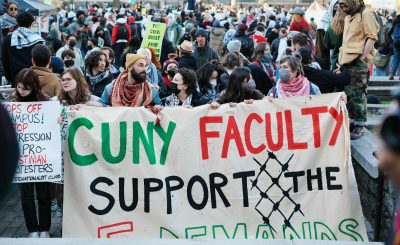By Tahreem Ashraf
QCC Professors are having hard time acclimating to online teaching while they encounter challenges. On the top of this they are having difficulty to develop good connection with the students and provide them with the resources they need.
“The virtual experience is very challenging,†said Urszula Golebiewska from the Department of Biological Sciences. For her, the inability to interact with the students in-person and failure to anticipate the needs of the students is the impediment in developing a better understanding of the course among students. “Everybody has different devices and different issues. It is time consuming to help each student individually over the internet,†she further stated. “I think the better knowledge of technology translates into a richer teaching experience,†asserts Spanish instructor, Eladia Raya from the Foreign Language department. “There is so much that technology can contribute to a good teaching and learning experience,†she added. While teaching synchronously, Professor Raya calls tele-teaching as a “work in progress†surrounded by obstructive circumstances.
Annemarie Coffey, from the Department of Art and Design and teaches foundational art studio courses using traditional hands-on technique with real art tools, finds herself in a dilemma where she doesn’t have the advantage of guiding the students about their misstep on the spot. “The greater challenge is following the absorption of instruction; not being in the same space as students to witness and more precisely instruct on the use of tools, monitor progress and provide immediate feedback to further success or curb errors,†she stated.
Professor Coffey also highlighted the struggles freshmen students experience while dealing with technical issues. “New students are not naturally inclined to go to Blackboard or even school emails.  That long-standing trigger and structure of a real campus and real classrooms with set meeting times is still the prompt most students, (particularly those right out of high school) are waiting for and right now it doesn’t exist,†she stated while accentuating this over looked element of online learning. “The significant lack of initial communication and participation in my registered lower freshmen vs. even upper freshmen (and more demonstrative vs. sophomores) tells me it is the new environment not the technology that is the hurdle,†she further outlined.Â
College professors are also facing difficulties with building solid good connections with the students in order to better communicate with them. “I have found it more difficult in a virtual class, but it can be done,†says Micheal Cesarano, from the Department of Speech Communicartion and Theater Arts.
Beth Counihan, from the English Department, has an active soul and longing for the same connection that she had when we were on campus. “I miss the energy, camaraderie and spontaneity of being together in the classroom,†she said.
Manuel Martinez, a Creative Writing instructor, taught his course online before the global pandemic. Despite having the experience of teaching online, he still faces difficulty with developing a good connection with the students via phone or e-mail. There are more than one hundred students he is teaching asynchronously this fall, this remote “virtual connection†is time consuming.
“So much what I do is connecting with people-and I don’t feel I connect with people as well this way.†states Eileen White, a film maker, who teaches film production at QCC. “It’s the hardest thing not seeing people’s faces,†she added.
“Teaching virtually is pretty tough but you have be creative,†said Jason Demas, Instructor of Physical Education, who is teaching his courses asynchronously. “I miss the personal interactions with students the most,†he added. Teaching sports class remotely is predicament, but professors haveno choice but to grapple with these circumstances effectively. “You need to remember no one asked for this really, so everyone just needs to try to complete everything the best way possible,†asserted Professor Demas.
The library staff and instructors are also facing challenges in order to support the students in the best way possible. “It’s been a challenge to build new connections and keep our existing relationships going without in-person time together,†said Vikki C. Terrile, Assistant Professor at Kurt R. Schmeller Library. Due to the lack of access to print books students now have to rely on the online resources reserved in Library database. “We have been working with teaching faculty to use free resources such as open educational resources (OERs), wherever they can in their classes, but the loss of access to reserve textbooks and other print books has been huge†she stated. “Much of what we do is work with the teaching faculty to bring library information literacy instruction to their classes, so the first thing we did as the campus was preparing to close was connect to those faculty about how we could honor those commitments in a remote environment.†During these hard circumstances Professor Terrile realized the importance of relationships between student and faculty throughout this academic turn. “I think we have all learned to not be so hard on ourselves when things don’t work and to have a sense of humor,†she said.
While professors are struggling to do their best to assist the students, they also expect their students to develop skills and to be comfortable with their academic experience this semester. Their only demand from students is to be “true to themselves†and establish better understanding towards the coursework.



